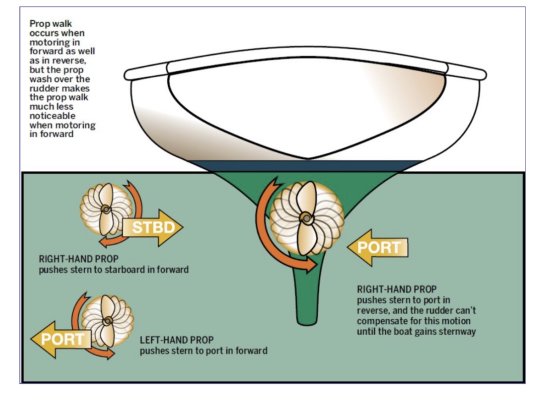mncruiser
Senior Member
It’s our third season with our Mainship 390, single Yanmar 300 with a bow thruster. I’m intent on not using the “cheating” bow thruster this season until I’m confident I can handle the boat without the thruster. Then I’ve earned the right to cheat!
We have fairly narrow fairways, we tie up starboard side. My usual cheating procedure is to go slightly past the slip, thruster the bow starboard, and in to the slip and a little port rudder brings the stern in.
Without thrusters, I go 3-4 slips past, and execute a back and fill turn thingy, then come into the slip.
My prop rotates clockwise.
Well I’ve been doing port turns, because the boat turns tighter that way. Guess what? That’s the wrong way!
My 10 year old informed me I was within 4” of “smoking the dinghy on a pole” while he was manning his stern line station as we came in last night. I have been feeling like I was drifting starboard more than I wanted to….because I’m turning the wrong way, correct?
He and I looked it up and I think that’s correct.
We went and got a pump out today, and I got the chance to do a few right turns, but coming into the slip I used the thruster as I could tell my dock crew was not in the mood for my boating challenge games.
Am I on the right track here?
We have fairly narrow fairways, we tie up starboard side. My usual cheating procedure is to go slightly past the slip, thruster the bow starboard, and in to the slip and a little port rudder brings the stern in.
Without thrusters, I go 3-4 slips past, and execute a back and fill turn thingy, then come into the slip.
My prop rotates clockwise.
Well I’ve been doing port turns, because the boat turns tighter that way. Guess what? That’s the wrong way!
My 10 year old informed me I was within 4” of “smoking the dinghy on a pole” while he was manning his stern line station as we came in last night. I have been feeling like I was drifting starboard more than I wanted to….because I’m turning the wrong way, correct?
He and I looked it up and I think that’s correct.
We went and got a pump out today, and I got the chance to do a few right turns, but coming into the slip I used the thruster as I could tell my dock crew was not in the mood for my boating challenge games.
Am I on the right track here?


